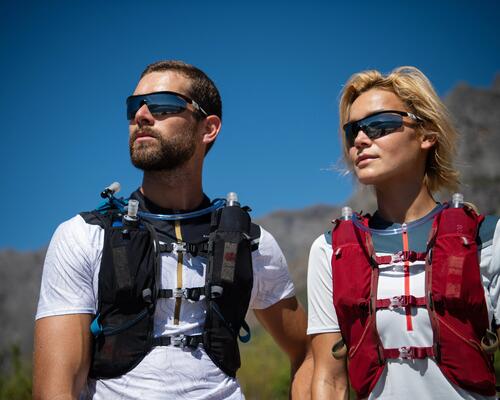1. Choose the right trail running equipment
Trail running has the advantage of not requiring a lot of equipment to start out. However, it's important to choose your trail running equipment carefully to make your training sessions even more consistent and enjoyable.
Regarding the top, it's better to choose a high-tech breathable T-shirt (more or less lightweight depending on the ambient temperature) rather than a cotton T-shirt that soaks up your perspiration. Naturally, in cooler temperatures, you can add one or two layers: a high-tech fleece and/or a trail running jacket (windproof and/or waterproof). A
For the bottoms, you will be able to run in shorts for most of the year. If they have a tendency to ride up the leg, it may be because of friction; in this case, apply some anti-chafing cream to your thighs before you go for a run.
Regarding the feet, they need to be protected from blisters. As for the shoes, here are several criteria that you need to consider: the type of terrain on which you'll run, the distance you'll cover and certain specific factors, such as your foot size (choose a slightly larger size because your feet will swell during physical effort), the drop, the cushioning, grip or even the traction.
Now let's talk about the gear: investing in a GPS watch is a good solution for knowing all the settings of the training session that you have just completed (stopwatch, distance, elevation gains, calories burned, etc.) When you start doing long outings, you'll also need a trail running backpack: THE iconic product of the discipline. You'll be able to use this to carry your food supplies: water bottles, cereal bars, fruit jellies, gels, etc. You can also carry your survival blanket (compulsory for certain races), head torch, trail running poles, sunglasses, mobile phone, neck warmer, headband, pair of gloves, etc.


